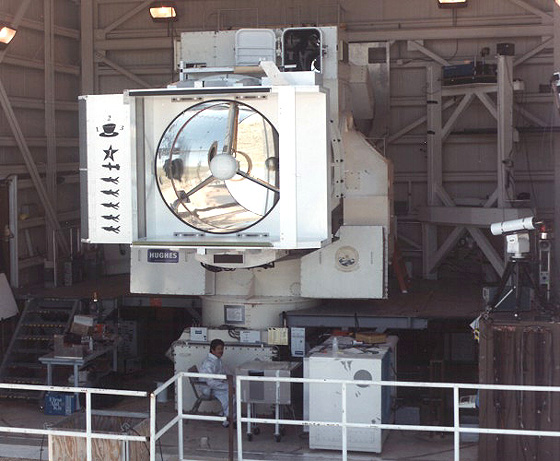-
- WASHINGTON (AP) -- Just after dusk in the New Mexican desert, a high-powered
Army laser trained its invisible beam on a U.S. satellite as it emerged
from over the horizon to the north.
-
- With a burst of flame and smoke, the
hulking device generated a beam that shot up through the atmosphere at
the small satellite 260 miles above the earth. The test, conducted Friday
at White Sands Missile Range, N.M., and announced Monday at the Pentagon,
went off successfully, pointing to a possible new direction in warfare.
-
- Weeks after an initial failure, the Pentagon
announced, the Army successfully fired its ``Miracl'' laser, an acronym
for the 1980s-vintage Mid-Infrared Advanced Chemical Laser, at an aging
Air Force satellite.
-
- Neither the satellite nor its target
point -- an infrared camera -- was damaged or disabled in the several test
firings lasting less than five seconds each. But the Pentagon views the
test as concrete proof of a long-held concern: that its own satellites,
as well as intelligence, civilian or commercial satellites, are vulnerable
to laser weapons.

-
- Air Force Lt. Col. Bob Potter, a Pentagon
spokesman, said the laser hit the target camera, which recorded data now
being evaluated at White Sands. Had the laser been turned up to full power
or trained on its target longer, it could have destroyed the satellite.
But the point of the test was to show that lower-intensity lasers may be
able to disable the information-gathering equipment, such as infrared sensors,
mounted on U.S. military satellites.
-
- As many as 30 nations may already be
able to use low-power lasers to blind the sensors on satellites used by
the U.S. military to monitor potentially hostile countries.
-
- The test marks the first time the United
States has fired a high-powered laser at a satellite in orbit. The Russian
government, which was informed of the test, had previously expressed concerns
about the testing as a potential threat to Russian satellites.
-
- Built by TRW, the laser is an offshoot
of the Reagan administration's Strategic Defense Initiative. It has been
fired into space many times, but never at a satellite, Potter said. The
laser, built on a swiveling platform, generates its energy from chemicals.
The beam is invisible to the naked eye, but the laser device sends off
a plume of flame and smoke, much like a missile launching.
-
- In 1985 Congress explicitly prohibited
the laser test, but the Republican-controlled Congress allowed the ban
to expire two years ago and enthusiastically supported the laser testing.
-
- Anticipating criticism from opponents
of the test, the Pentagon has gone out of its way to stress the defensive
nature. Critics say the experiment would be seen by other nations, including
some hostile to American interests, as an invitation to develop their own
anti-satellite lasers.
|